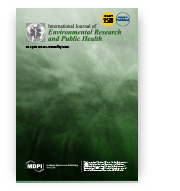Possibility of Metal Accumulation in Reed Canary Grass (Phalaris arundinacea L.) in the Aquatic Environment of South-Western Polish Rivers
Magdalena Senze, Monika Kowalska-Góralska, Katarzyna Czyż, Anna Wondołowska-Grabowska
International Journal of Environmental Research and Public Health
Ministerial score = 140.0
Journal Impact Factor (2020) = 4.614 (Q1)
 A four-year research study was conducted on aquatic plants (reed canary grass) growing in the beds of three rivers and their tributaries in Lower Silesia, Poland. Metal contents (Cu, Cd, Ni, Pb, Zn, Fe, Mn) were determined in plant samples, metal accumulation in water (BCFw) and sediment (BCFB), Metal Pollution Index (MPI) and Enrichment Factor (EF) were calculated. The highest contents of copper, lead, nickel and cadmium were found in reed canary grass sampled from the Nysa Szalona River. The highest values were recorded for zinc in the Bystrzyca River, and for iron and manganese in the Strzegomka River. The series of metals were as follows: Nysa Szalona and Strzegomka: Cd < Ni < Pb < Cu < Zn < Mn < Fe, Bystrzyca: Cd < Ni < Cu < Pb < Zn < Mn < Fe. Throughout the study period, the lowest values of metals in plants were recorded in 2015 and 2018, and the highest in 2017. The general picture of MPI in aquatic plants is arranged in the series Bystrzyca < Strzegomka < Nysa Szalona. These values classify the studied material at a high level of pollution in all rivers. In the comparison of the two extreme sites, i.e., source–mouth, higher values were found at the mouth of the reservoir, which suggests that metals move with the water current and accumulate more with the direction of the river flow, which is most likely a consequence of the influence of the catchment area as the source of metals. The series of EF enrichment factor values were as follows: Bystrzyca—Ni < Cd < Fe < Cu < Zn < Mn < Pb, Nysa Szalona—Ni < Fe < Zn < Cd < Mn < Cu < Pb, Strzegomka—Ni < Cd < Fe < Zn < Cu < Pb < Mn. For all the samples studied, the values found in spring were much higher than in autumn, which indicates the great importance for research in that area. The levels of copper and iron were within the range of moderate values, lead and manganese reached very high and exceptionally high values, and the remaining metals were within the values described as significant. Bioaccumulation of metals determined relative to bottom sediments was highest in 2017 and lowest in 2018, while bioaccumulation relative to water was highest in 2018 and lowest in 2016. The four-year study found that the metal content in reed canary grass was mostly within the range of mean values presented in the literature from moderately polluted areas. Also, no significant deviation was found from levels that have been recorded for the same rivers for more than two decades.
A four-year research study was conducted on aquatic plants (reed canary grass) growing in the beds of three rivers and their tributaries in Lower Silesia, Poland. Metal contents (Cu, Cd, Ni, Pb, Zn, Fe, Mn) were determined in plant samples, metal accumulation in water (BCFw) and sediment (BCFB), Metal Pollution Index (MPI) and Enrichment Factor (EF) were calculated. The highest contents of copper, lead, nickel and cadmium were found in reed canary grass sampled from the Nysa Szalona River. The highest values were recorded for zinc in the Bystrzyca River, and for iron and manganese in the Strzegomka River. The series of metals were as follows: Nysa Szalona and Strzegomka: Cd < Ni < Pb < Cu < Zn < Mn < Fe, Bystrzyca: Cd < Ni < Cu < Pb < Zn < Mn < Fe. Throughout the study period, the lowest values of metals in plants were recorded in 2015 and 2018, and the highest in 2017. The general picture of MPI in aquatic plants is arranged in the series Bystrzyca < Strzegomka < Nysa Szalona. These values classify the studied material at a high level of pollution in all rivers. In the comparison of the two extreme sites, i.e., source–mouth, higher values were found at the mouth of the reservoir, which suggests that metals move with the water current and accumulate more with the direction of the river flow, which is most likely a consequence of the influence of the catchment area as the source of metals. The series of EF enrichment factor values were as follows: Bystrzyca—Ni < Cd < Fe < Cu < Zn < Mn < Pb, Nysa Szalona—Ni < Fe < Zn < Cd < Mn < Cu < Pb, Strzegomka—Ni < Cd < Fe < Zn < Cu < Pb < Mn. For all the samples studied, the values found in spring were much higher than in autumn, which indicates the great importance for research in that area. The levels of copper and iron were within the range of moderate values, lead and manganese reached very high and exceptionally high values, and the remaining metals were within the values described as significant. Bioaccumulation of metals determined relative to bottom sediments was highest in 2017 and lowest in 2018, while bioaccumulation relative to water was highest in 2018 and lowest in 2016. The four-year study found that the metal content in reed canary grass was mostly within the range of mean values presented in the literature from moderately polluted areas. Also, no significant deviation was found from levels that have been recorded for the same rivers for more than two decades.
DOI:10.3390/ijerph19137779









